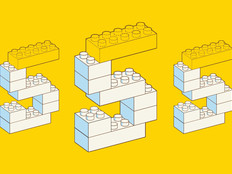What You Need to Know About Software-Defined Networks
While software-defined networks promise to bring agility and flexibility to the data center, the market will take several years to mature. In the meantime, IT managers should be aware of SDNs as they plan future hardware deployments.
Where should organizations introduce the technology, and how relevant is it to enterprise computing? What follows is an overview detailing what network managers need to know about SDNs.
1. Understand traditional networking.
With a traditional network, the data plane is the part of the network that moves packets from one port to another, either switching them within a LAN or routing them to another network. The control plane tells the data plane how to behave; that is, what rules govern how packets are switched or routed. The control plane in one box talks to the control plane in another box using very-well-defined protocols and rules, such as Open Shortest Path First, Border Gateway Protocol, Multiprotocol Label Switching and Spanning Tree.
What’s important to realize about this model is that the openness of traditional networking starts at the edge of each network device. In other words, while the control plane of one router in a data center may talk to the control plane of another router using the open standard OSPF, this only matters between devices. Within each device, though, sits a closed and proprietary interface between the control plane and the data plane. How the OSPF protocol running in the control plane of a device causes changes in the forwarding database consulted by the data plane in that same box — well, that’s a mystery in traditional networking.
2. Learn what SDNs do.
SDNs open up the interface between the control and data planes within a network. This makes it possible to move the control plane completely outside of the network devices and to build control planes that are completely different from anything currently available.
The technology doesn’t improve existing networking; it’s a different kind of networking altogether. SDNs hold no interest for many data center managers. There’s nothing fundamentally broken about the way that network devices are designed today, and for most organizations, traditional network gear works great and has the right level of programmability and control. So, while every data center manager should understand what’s new about SDNs, many — even most — won’t ever deploy this technology in their environments.
3. Know where to deploy them.
Wondering where SDNs will initially be deployed? Consult a list of the members of the
Open Networking Foundation, the main group coordinating people involved in SDN. In addition to the usual equipment and software makers (including Cisco Systems, Juniper Networks, F5, HP, Oracle and Riverbed Technology), most of the active members are telecom carriers, data center operators and data-intensive companies such as Alibaba, Google, Yahoo and Goldman Sachs.
Early SDNs appeal the most to organizations that are building applications that take standard networking to the edge of its capabilities. Issues such as scalability beyond 100 gigabits, ultra-high reliability of complex systems, delivering consistent experience to a worldwide user base and an ability to roll out changes with no downtime are common in such environments. SDNs can add flexibility in network control far beyond what is currently available, making them valuable tools in solving problems of this scale.
4. Watch future product development.
For IT managers, SDNs will show up first, perhaps invisibly, in common carrier and data center products such as automatic rerouting of LAN traffic for disaster recovery and cloud platform as a service and software as a service offerings.
Over time, SDNs will migrate into enterprise products. The first adopters should be IT managers who have very complicated networks with many internal virtual LANs, long access control lists, multiple dynamic routing protocols or sophisticated quality of service profiles. If the promise of SDN is upheld, these functions can be centralized, thus removing the time-consuming requirement to configure many devices and hope that everything is properly synchronized. SDNs, which break out data and control planes to separate devices, may also give greater vendor independence to IT managers.
For now, SDNs are an active area of research with enthusiastic supporters and a great deal of promise. While products are years away from being enterprise-ready, IT managers can look forward to greater flexibility, manageability and scalability in the data center.






